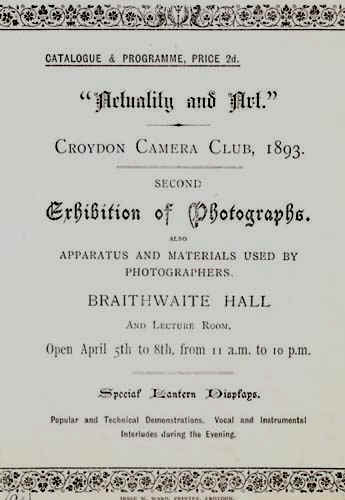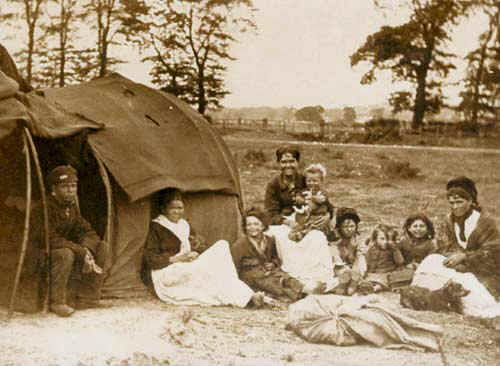Quick Club History
The Croydon Camera Club was founded in 1890, when the town was a manufacturing centre for films, plates, chemicals and photographic apparatus, to serve the quickly growing interest in the new "hobby" of photography.

Hector Maclean, who had gained some acclaim as a pictorial photographer and writer on photographic topics, convened a meeting to form the club, and the membership quickly rose to 40. The membership fee was ten shillings and sixpence.
From its earliest days the club has met on a Wednesday evening, even during the two world wars, and always under the name of the Croydon Camera Club. The picture left shows a club outing on the Thames in 1925.
In the early years the rapid technical developments in photography attracted many members, interested in chemistry and the science of photography. In more recent years, the final photograph was the emphasis, rather than how it was produced. However with the coming of the digital age, technical matters are again a major topic in the club.
The history seems to indicate that in the earlier years the Croydon Camera Club was a "gentleman’s club". But after 56 years of existence, ladies were admitted in 1946. Notable Members In the early years of the Club’s existence, members included several people who worked for, or were closely associated with, the Croydon firm Wratten and Wainwright, later taken over by Kodak. Since the takeover Kodak has kept the company’s name alive, at least in part, with its world-renowned Wratten filters.

Amongst those connected with both Wratten and Wainwright and Croydon Camera Club was Dr Kenneth Mees, whose experiments gave rise to the first panchromatic plates.
When Wratten and Wainwright was bought by Kodak, its founder, I. D. Wratten, who was also a Croydon member, became a director of Kodak in this country. Dr Mees went on to set up the Kodak Research Laboratories in the United States. before finally becoming a Kodak vice-president.

Other notable members in those early days included Enoch Salt, (the regular peppery contributor to the British Journal of Photography under the name of "The Office Boy"), W. H. Smith (general manager of the Platinotype Company) and C. Welborne Piper (who perfected the Bromoil process).
Croydon Camera Club members have always been active in photographic circles outside the club, and several have served at different times as presidents of bodies such as the Royal Photographic Society, the Photographic Alliance of Great Britain and the (now defunct) Central Association of Photographic Societies.
In the 1970s, the Club became the first in Britain to enter into formal association with similar societies in France, Belgium and Switzerland. As direct consequence a series of important exhibitions were mounted, under the name Photeurop.
The club currently has about 50 members and we regularly compete in Surrey Photographic Association and Federation of South London Photographic Societies.
In celebration of the year 2000 (and Croydon Camera Club's 110th year) the Club has put together a selection of images to be known as "The Millennium Album". Purely for the Club's archives, it will show many current members' work as well as giving a brief outline of their individual views on photographic matters and other related issues. The Club has built up comprehensive archival material over the years, and The Millennium Album takes advantage of a great opportunity to supplement and update its records.



